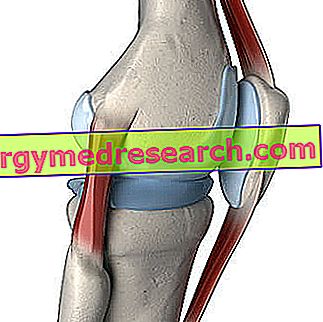
What is Pedea?
Pedea is a solution for injection containing the active substance ibuprofen.
What is Pedea used for?
Pedea is used in the treatment of "patent ductus arteriosus" in premature infants born six weeks or more in advance (gestation period less than 34 weeks). The patent ductus arteriosus is a pathology in which the arterial duct (the blood vessel that allows the blood to bypass the child's lungs before birth) does not close after birth, causing problems for the heart and lungs.
Due to the low number of neonates with patent ductus arteriosus, the disease is considered "rare" and on February 14, 2001 Pedea was designated an "orphan medicine" (a medicine used in rare diseases).
The medicine can only be obtained with a prescription.
How is Pedea used?
Treatment with Pedea should be performed exclusively at a neonatal intensive care unit, under the supervision of an experienced neonatologist (specialist doctor for premature babies).
Pedea is given as three injections into a vein at 24-hour intervals. Each injection lasts 15 minutes. The first injection should be given at least 6 hours after birth. If the ductus arteriosus has not closed within 48 hours of the last injection, or if it reopens, a second cycle of three doses of Pedea can be given. If the condition persists after the second course of treatment, it may be necessary to have surgery.
Pedea should not be used as a preventive measure, ie before the actual patency of the arterial duct has been ascertained.
How does Pedea work?
The active ingredient of Pedea is ibuprofen, used since the sixties as a painkiller and anti-inflammatory. It works by reducing the level of chemical messengers called prostaglandins. Since prostaglandins also contribute to keeping the ductus arteriosus open after birth, it is hypothesized that Pedea acts by reducing the levels of prostaglandins, allowing the closure of this blood vessel.
What studies have been carried out on Pedea?
Since ibuprofen has been in use for a long time, the company presented data already published in the medical literature. He also presented results of studies, including a study on the observation of different doses of Pedea in 40 premature infants. The main measure of effectiveness was the number of cases in which the ductus arteriosus was closed without the need for surgery.
In a further study, the effects of Pedea and placebo (a dummy treatment) were compared on 131 newborns treated before the actual patency of the ductus arteriosus was ascertained.
What benefit has Pedea shown during the studies?
In the study dealing with the patent ductus arteriosus with the approved dose of Pedea a 75% closure rate was reached in premature infants, born 11-13 weeks in advance (six out of eight), and 33% in newborns premature, born 14-16 early (two out of six).
In the study of the use of Pedea before the actual patency of the ductus arteriosus was established in infants, Pedea seemed more effective than placebo in preventing surgery. However, the study had to be stopped early because of side effects (kidney and lung problems).
What is the risk associated with Pedea?
it is difficult to assess the undesirable effects observed in children given it, because they could be related to the patent ductus arteriosus or to Pedea itself. The most common side effects seen in children given the medicine (seen in more than 1 in 10 children) are thrombocytopenia (low platelet count in the blood), neutropenia (low levels of neutrophils, a type of white blood cell), bronchopulmonary dysplasia (abnormal lung tissue, usually seen in babies born prematurely), increased blood creatinine levels (a marker of kidney problems) and reduced blood sodium levels. For the full list of all side effects reported with Pedea, see the Package Leaflet.
Pedea should not be used in children who may be hypersensitive (allergic) to ibuprofen or any of the other ingredients. It should not be used in children with life-threatening infections, bleeding, bleeding problems or kidneys. Nor should it be used in children with congenital heart disease where an open ductus arteriosus is needed for blood flow, or in children with necrotizing enterocolitis (a serious bacterial infection that causes fragments of dead tissue in the intestine).
Why has Pedea been approved?
The Committee for Medicinal Products for Human Use (CHMP) has accepted that the data presented by the company indicate that Pedea is effective in the treatment of patent ductus arteriosus. The committee decided that Pedea's benefits outweigh its risks in the treatment of patent ductus arteriosus in prematurely born infants (gestation period less than 34 weeks). The committee recommended that Pedea be given marketing authorization.
Other information about Pedea:
On 29 July 2004, the European Commission granted a marketing authorization valid throughout the European Union to Orphan Europe SARL. The marketing authorization was renewed on 29 July 2009.
For a summary of the opinion of the Committee for Orphan Medicinal Products, click here.
For the full EPAR version of Pedea, click here.
Last update of this summary: 07-2009.



